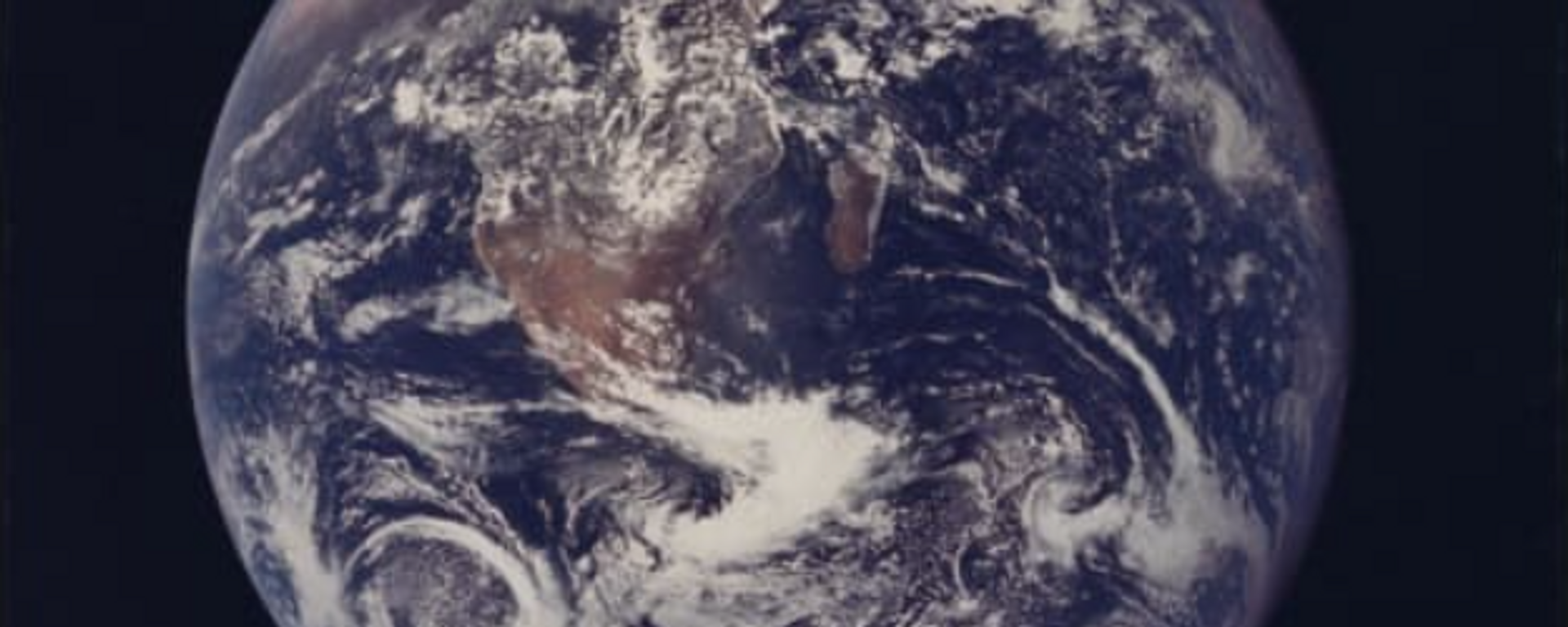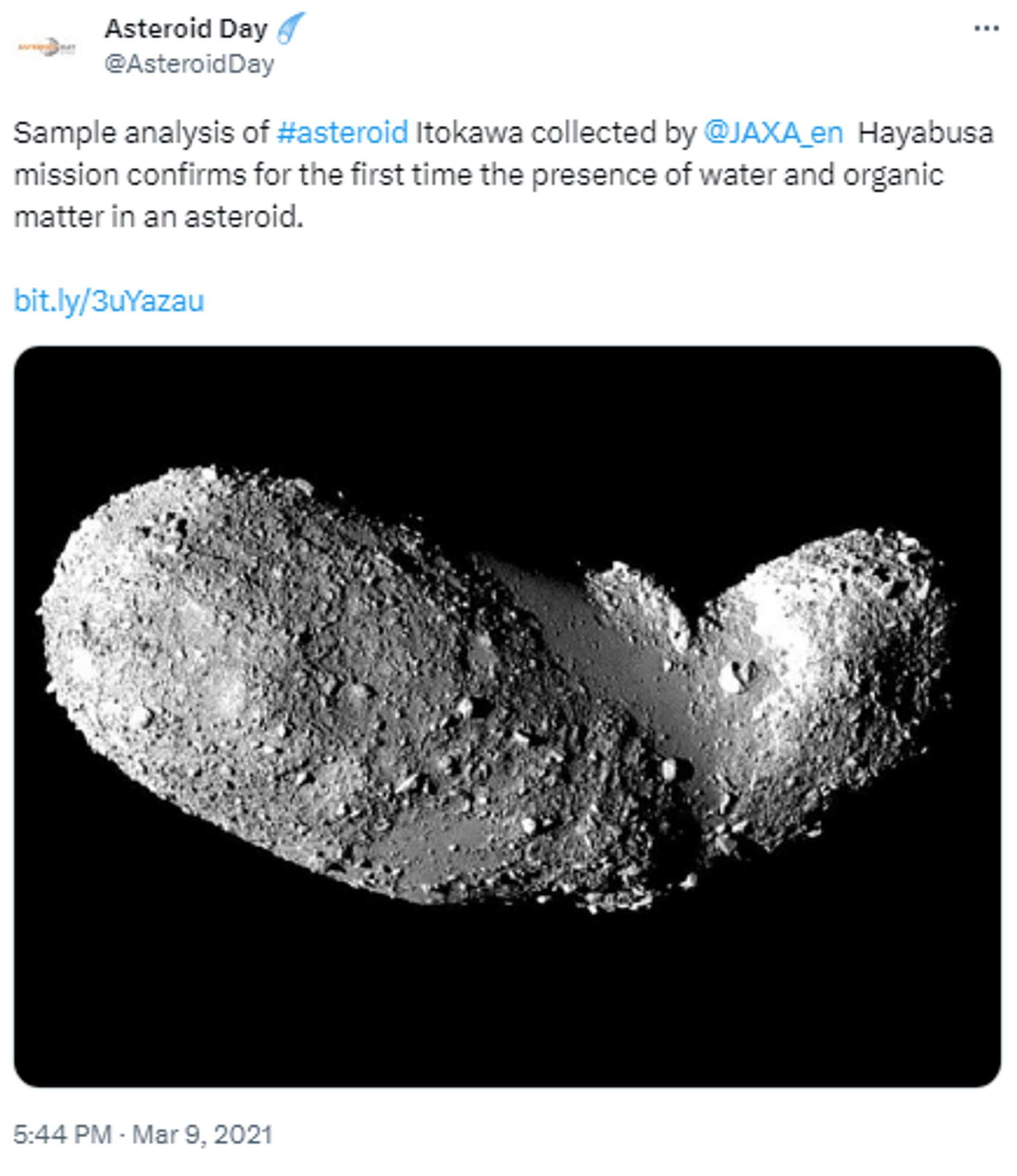https://sputnikglobe.com/20230614/salty-space-rock-offers-clues-as-to-how-planet-earth-got-its-water-1111150770.html
'Salty' Space Rock Offers Clues as to How Planet Earth Got Its Water
'Salty' Space Rock Offers Clues as to How Planet Earth Got Its Water
Sputnik International
Water may have been brought to Earth by asteroids hurtling from the outer regions of the solar system, a new study suggests.
2023-06-14T14:41+0000
2023-06-14T14:41+0000
2023-06-14T14:41+0000
beyond politics
planet earth
water
asteroid
itokawa
hayabusa
space
comet
https://cdn1.img.sputnikglobe.com/img/107119/28/1071192832_0:9:1920:1089_1920x0_80_0_0_649200af92ee87de0c82e2e6b52cee2f.jpg
Water may have been brought to Earth by asteroids hurtling from the outer regions of the solar system, a new study suggests.After some miniscule crystals of salt - sodium chloride - were found in a sample from an asteroid analyzed by researchers at the University of Arizona Lunar and Planetary Laboratory, the discovery fed into one of the existing theories regarding how our blue planet got its water. These crystals could only have formed in the presence of liquid water, said the research team, which published its findings in Nature Astronomy.The team had been performing a detailed analysis of samples collected from asteroid Itokawa in 2005. Interestingly, the S-type asteroids like Itokawa are of a category that is believed to lack water-bearing minerals. The Japanese space probe Hayabusa mission brought the samples back to Earth in 2010. The purpose of the study was to confirm that the salt crystals originated on the asteroid's body. The sample studied belonged to a type known as an ordinary chondrite.After employing various techniques, along with a control experiment, the team confirmed that, "the salt in our sample is native to the asteroid Itokawa. We ruled out every possible source of contamination,” said Che."If it now turns out that the most common asteroids may be much 'wetter' than we thought, that will make the water delivery hypothesis by asteroids even more plausible," Zega said. Researchers have repeatedly puzzled over the mystery of Earth's source of water. Some of the primary theories have been cometary or asteroid delivery to Earth through impacts during the early stages of the solar system. At the time, inner planets were frequently slammed into by these space rocks. Volcanic outgassing is yet another speculation, suggesting that water was always present inside Earth, and volcanic activity brought this water to the surface. The water vapor, claims the theory, later condensed to form oceans.
https://sputnikglobe.com/20211205/origin-of-water-on-earth-mystery-solved-1091264466.html
itokawa
Sputnik International
feedback@sputniknews.com
+74956456601
MIA „Rossiya Segodnya“
2023
News
en_EN
Sputnik International
feedback@sputniknews.com
+74956456601
MIA „Rossiya Segodnya“
Sputnik International
feedback@sputniknews.com
+74956456601
MIA „Rossiya Segodnya“
earth's source of water, water on earth, brought by asteroids, crystals of salt, sodium chloride, sample from an asteroid, researchers at the university of arizona lunar and planetary laboratory, samples from asteroid itokawa, japanese space probe hayabusa mission, mystery of earth's source of water.
earth's source of water, water on earth, brought by asteroids, crystals of salt, sodium chloride, sample from an asteroid, researchers at the university of arizona lunar and planetary laboratory, samples from asteroid itokawa, japanese space probe hayabusa mission, mystery of earth's source of water.
'Salty' Space Rock Offers Clues as to How Planet Earth Got Its Water
There have been numerous theories about how our planet got its water, ranging from delivery by comet, a “dirty snowball” made of ice and rock, asteroid transfer from the outer regions of the solar system, or volcanic outgassing from the interior of the Earth itself.
Water may have been brought to Earth by asteroids hurtling from the outer regions of the solar system, a new study suggests.
After some miniscule crystals of salt - sodium chloride - were found in a sample from an asteroid analyzed by researchers at the University of Arizona Lunar and Planetary Laboratory, the discovery fed into one of the existing theories regarding how our blue planet got its water. These crystals could only have formed in the presence of liquid water, said the research team, which
published its findings in
Nature Astronomy.The team had been performing a detailed analysis of samples collected from asteroid Itokawa in 2005. Interestingly, the S-type asteroids like Itokawa are of a category that is believed to lack water-bearing minerals. The Japanese space probe
Hayabusa mission brought the samples back to Earth in 2010. The purpose of the study was to confirm that the salt crystals originated on the asteroid's body. The sample studied belonged to a type known as an ordinary chondrite.
“It has long been thought that ordinary chondrites are an unlikely source of water on Earth. Our discovery of sodium chloride tells us this asteroid population could harbor much more water than we thought,” said study senior author Professor Tom Zega, who together with lead author Shaofan Che performed the analysis.
After employing various techniques, along with a control experiment, the team confirmed that, "the salt in our sample is native to the asteroid Itokawa. We ruled out every possible source of contamination,” said Che.
"If it now turns out that the most common asteroids may be much 'wetter' than we thought, that will make the water delivery hypothesis by asteroids even more plausible," Zega said.

5 December 2021, 16:19 GMT
Researchers have repeatedly puzzled over the mystery of Earth's
source of water. Some of the primary theories have been cometary or asteroid delivery to Earth through impacts during the early stages of the solar system. At the time, inner planets were frequently slammed into by these space rocks. Volcanic outgassing is yet another speculation, suggesting that water was always present inside Earth, and volcanic activity brought this water to the surface. The water vapor, claims the theory, later condensed to form oceans.






